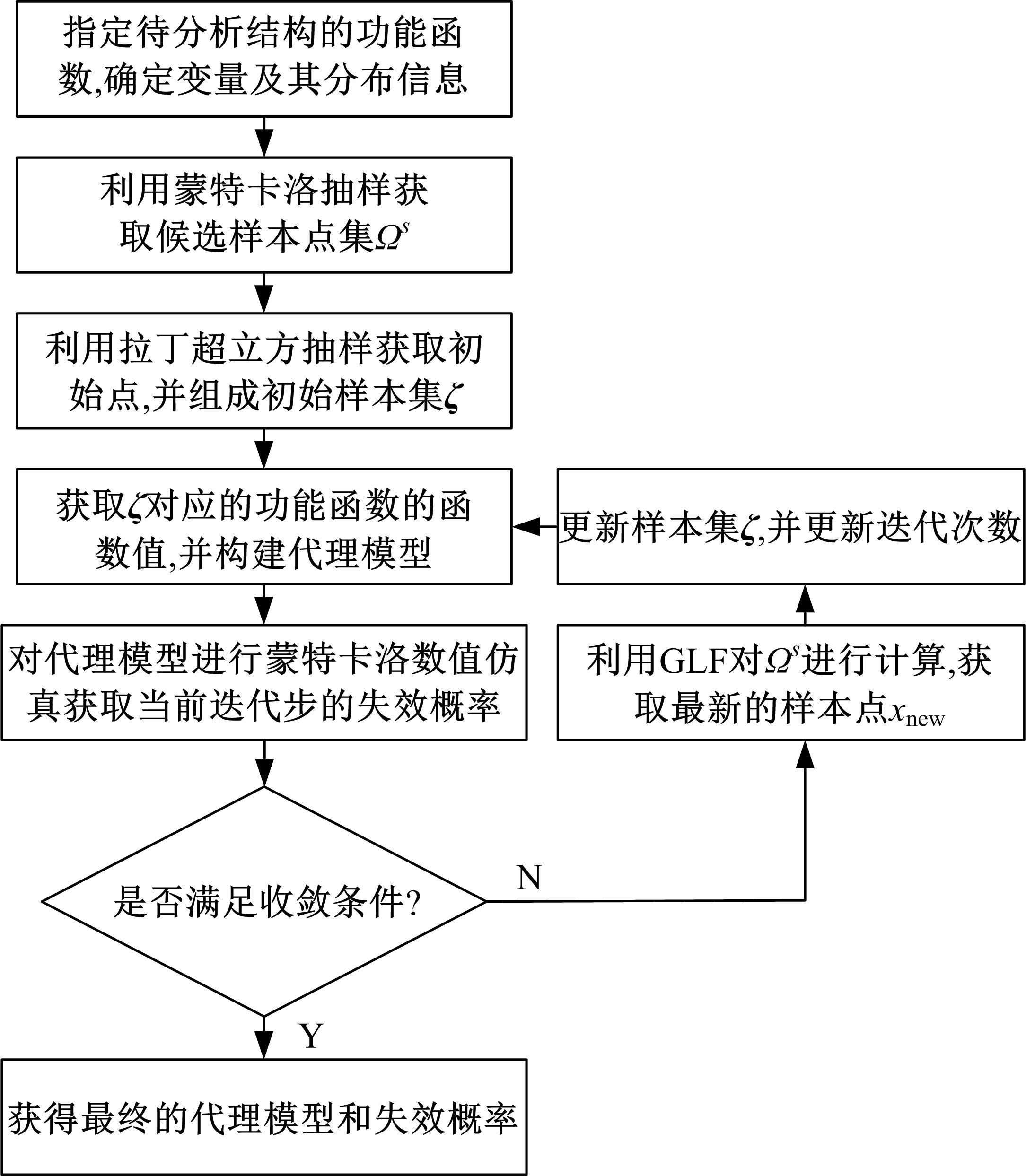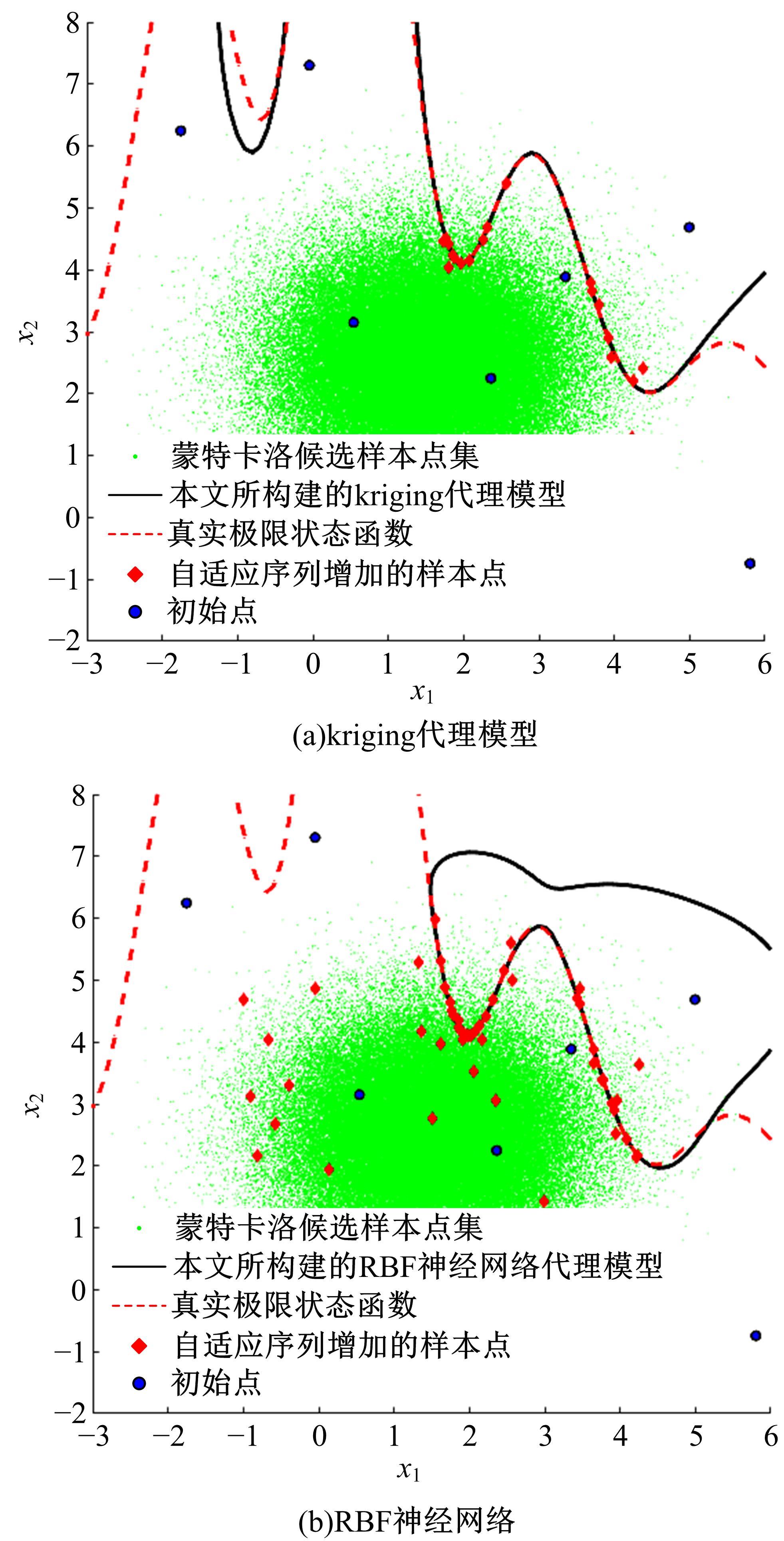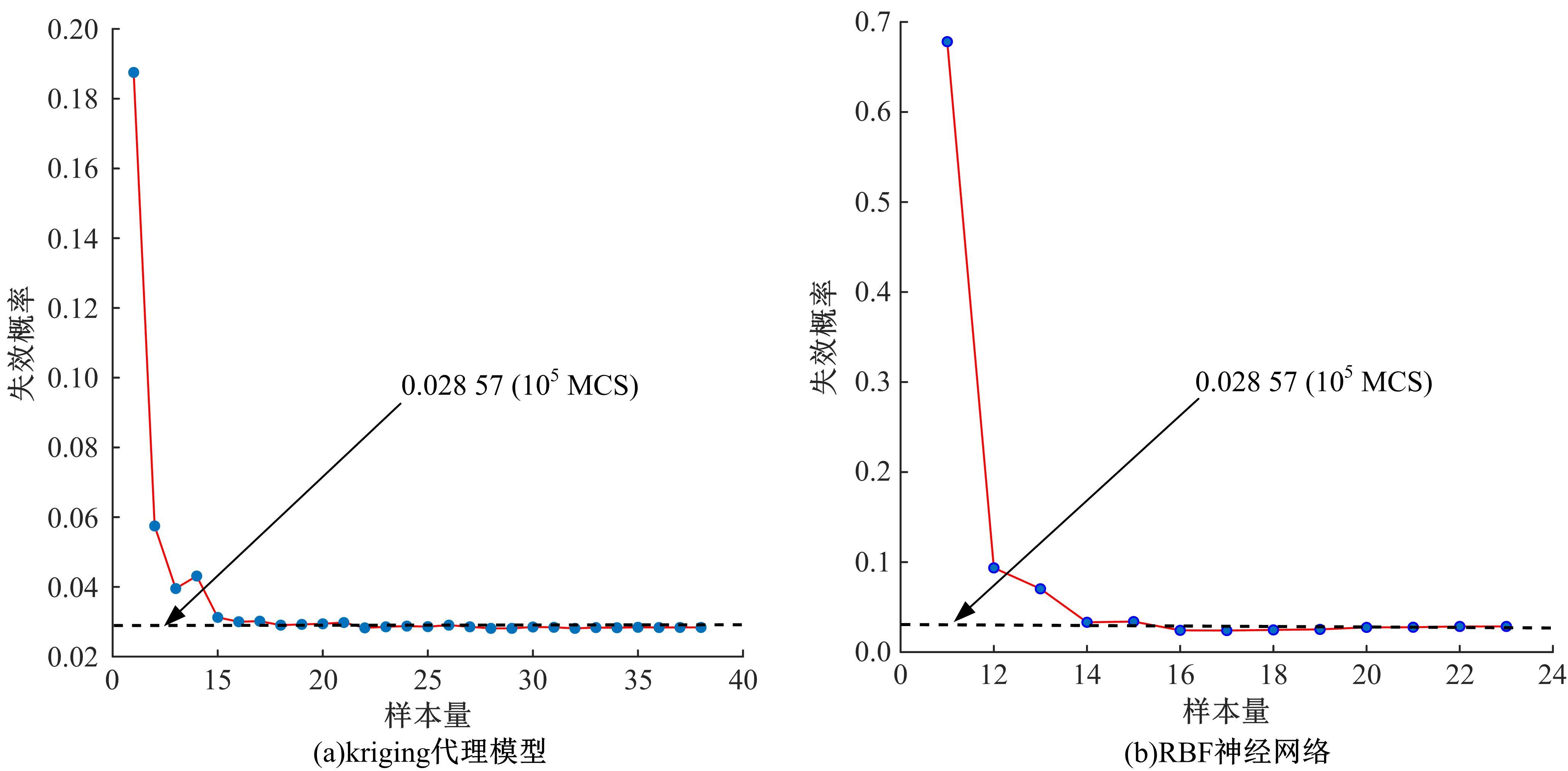Journal of Jilin University(Engineering and Technology Edition) ›› 2021, Vol. 51 ›› Issue (6): 1975-1981.doi: 10.13229/j.cnki.jdxbgxb20200613
New adaptive sampling strategy for structural reliability analysis
Guo-fa LI1,2( ),Ze-quan CHEN1,2,Jia-long HE1,2(
),Ze-quan CHEN1,2,Jia-long HE1,2( )
)
- 1.Key Laboratory of CNC Equipment Reliability,Ministry of Education,Jilin University,Changchun 130022,China
2.College of Mechanical and Aerospace Engineering,Jilin University,Changchun 130022,China
CLC Number:
- TB114.3
| 1 | Ghohani A H, Rashki M, Rostamian M, et al. Refined first-order reliability method using cross-entropy optimization method[J]. Engineering with Computers, 2019, 35(4):1507-1509. |
| 2 | Behrooz K, Subrata C. A hybrid self-adaptive conjugate first order reliability method for robust structural reliability analysis[J]. Applied Mathematical Modelling, 2018, 53: 319-332. |
| 3 | Lee C H, Kim Y. Probabilistic flaw assessment of a surface crack in a mooring chain using the first- and second-order reliability method[J]. Marine Structures, 2019, 63: 1-15. |
| 4 | Meng Z, Zhou H L, Hu H, et al. Enhanced sequential approximate programming using second order reliability method for accurate and efficient structural reliability-based design optimization[J]. Applied Mathematical Modelling, 2018, 62: 562-579. |
| 5 | Zhang X F, Wang L, Sørensen J D. REIF: a novel active-learning function toward adaptive Kriging surrogate models for structural reliability analysis[J]. Reliability Engineering & System Safety, 2019, 185: 440-454. |
| 6 | Marelli S, Sudret B. An active-learning algorithm that combines sparse polynomial chaos expansions and bootstrap for structural reliability analysis[J]. Structural Safety, 2018, 75: 67-74. |
| 7 | Xu J, Kong F. A cubature collocation based sparse polynomial chaos expansion for efficient structural reliability analysis[J]. Structural Safety, 2018, 74: 24-31. |
| 8 | 孟广伟, 李广博, 周振平, 等. 基于Fourier正交基神经网络响应面法的结构可靠性分析[J]. 吉林大学学报:工学版, 2012, 42(): 135-138. |
| Meng Guang-wei, Li Guang-bo, Zhou Zhen-ping, et al.Structure reliability analysis based on Fourier orthogonal neural network response surface method[J]. Journal of Jilin University (Engineering and Technology Edition), 2012, 42(Sup.1):135-138. | |
| 9 | Fan C B, Huang Y B, Wang Q F. Sparsity-promoting polynomial response surface: a new surrogate model for response prediction[J]. Advances in Engineering Software, 2014, 77: 48-65. |
| 10 | Rashki M, Azarkish H, Rostamian M, et al. Classification correction of polynomial response surface methods for accurate reliability estimation[J]. Structural Safety, 2019, 81: No.101869. |
| 11 | Roy A, Manna R, Chakraborty S. Support vector regression based metamodeling for structural reliability analysis[J]. Probabilistic Engineering Mechanics, 2019, 55:18-89. |
| 12 | Zhu C X, Zhao H B. Least square support vector machine for structural reliability analysis[J]. International Journal of Computer Applications in Technology, 2016, 53(1): 51-61. |
| 13 | Echard B, Gayton N, Lemaire M. AK-MCS: an active learning reliability method combining Kriging and Monte Carlo simulation[J]. Structural Safety, 2011, 33(2): 145-154. |
| 14 | Jiang C, Qiu H B, Gao L, et al. EEK-SYS: system reliability analysis through estimation error-guided adaptive Kriging approximation of multiple limit state surfaces[J]. Reliability Engineering & System Safety, 2020,198: No.106906. |
| 15 | Lv Z, Lu Z Z, Wang P. A new learning function for Kriging and its applications to solve reliability problems in engineering[J]. Computers & Mathematics with Applications, 2015, 70(5): 1182-1197. |
| 16 | Sun Z L, Wang J, Li R, et al. LIF: a new Kriging based learning function and its application to structural reliability analysis[J]. Reliability Engineering & System Safety, 2017, 157: 152-165. |
| 17 | Wang Z Y, Shafieezadeh A. REAK: reliability analysis through error rate-based adaptive kriging[J]. Reliability Engineering & System Safety, 2019, 182: 33-45. |
| 18 | Yang X F, Liu Y S, Mi C Y, et al. System reliability analysis through active learning Kriging model with truncated candidate region[J]. Reliability Engineering & System Safety, 2018, 169: 235-241. |
| 19 | Bichon B J, Eldred M S, Swiler L P, et al. Efficient global reliability analysis for nonlinear implicit performance functions[J]. Aiaa Journal, 2008, 46(10): 2459-2468. |
| 20 | 肖宁聪,袁凯,王永山. 基于序列代理模型的结构可靠性分析方法[J]. 电子科技大学学报, 2019, 48(1): 156-160. |
| Xiao Ning-cong, Yuan Kai, Wang Yong-shan. Structural reliability analysis using sequential surrogate models[J]. Journal of University of Electronic Science and Technology of China, 2019, 48(1): 156-160. |
| [1] | Zun-ling DU,Yi-min ZHANG. Reliability analysis of piston pump under random flow rate [J]. Journal of Jilin University(Engineering and Technology Edition), 2021, 51(6): 1967-1974. |
| [2] | Xue-ping FAN,Guang-hong YANG,Qing-kai XIAO,Yue-fei LIU. Optimal R-vine copula information fusion for failure probability analysis of long-span bridge girder [J]. Journal of Jilin University(Engineering and Technology Edition), 2021, 51(4): 1296-1305. |
| [3] | Dan-tong OUYANG,Cong MA,Jing-pei LEI,Sha-sha FENG. Knowledge graph embedding with adaptive sampling [J]. Journal of Jilin University(Engineering and Technology Edition), 2020, 50(2): 685-691. |
| [4] | LIU Ying, ZHANG Kai, YU Xiang-jun. Multi-objective optimization of hydrostatic bearing of hollow shaft based on surrogate model [J]. 吉林大学学报(工学版), 2017, 47(4): 1130-1137. |
| [5] | MENG Guang-wei, FENG Xin-yu, ZHOU Li-ming, Li Feng. Structural reliability analysis based on dimension reduction algorithm [J]. 吉林大学学报(工学版), 2017, 47(1): 174-179. |
| [6] | SI Wei, MA Biao, REN Jun-ping, WANG Hai-nian, GE-Sang Ze-ren. Analysis of asphalt pavement performance under freeze-thaw cycles using reliability method [J]. 吉林大学学报(工学版), 2016, 46(1): 126-132. |
| [7] | ZHOU Zhi-guo, LU Jiang-yue. Reliability Analysis of piezoceramics composite plate under bending vibration model [J]. 吉林大学学报(工学版), 2013, 43(增刊1): 138-142. |
| [8] | WANG Xiao-yan, SHEN Gui-xiang, ZHANG Ying-zhi, ZHENG Shan, NIU Xu-lei, LIANG Dong. Analysis about failure correlation of CNC equipment base on DEMATEL [J]. 吉林大学学报(工学版), 2012, 42(增刊1): 100-103. |
| [9] | ZHANG Ying-zhi, ZHENG Rui, SHEN Gui-xiang, WANG Zhi-qiong, LI Huai-yang, et al. Failure dependency of CNC equipment based on copula theory [J]. 吉林大学学报(工学版), 2011, 41(6): 1636-1640. |
| [10] |
LI Yi , YAN Yun-qi,ZHAO Wen .
Time-dependent reliability analysis of stiffness of adding storey onto inservice structure [J]. 吉林大学学报(工学版), 2009, 39(02): 398-0401. |
|
||







